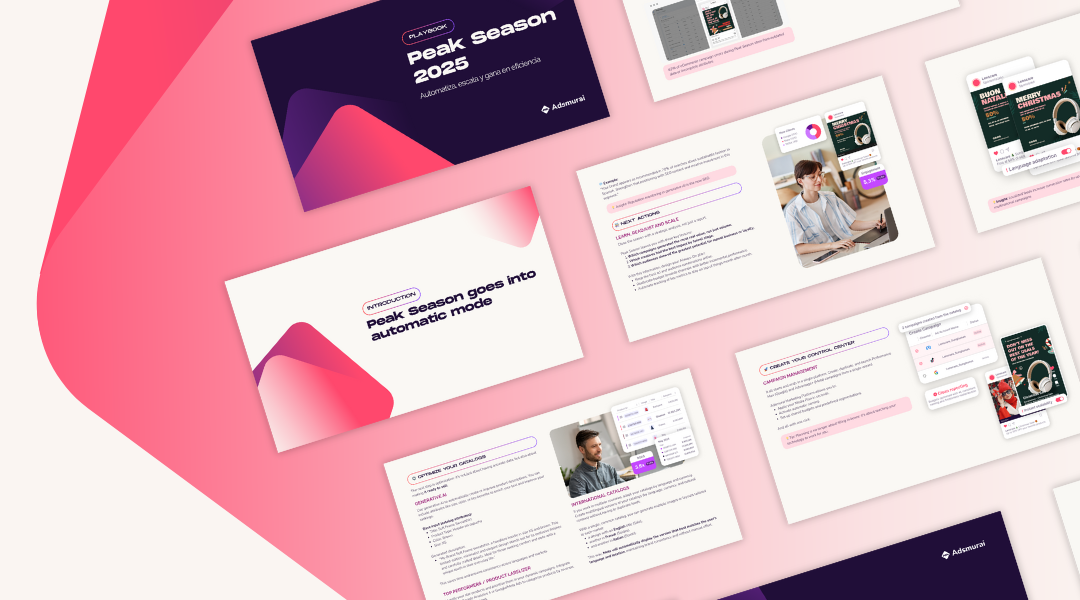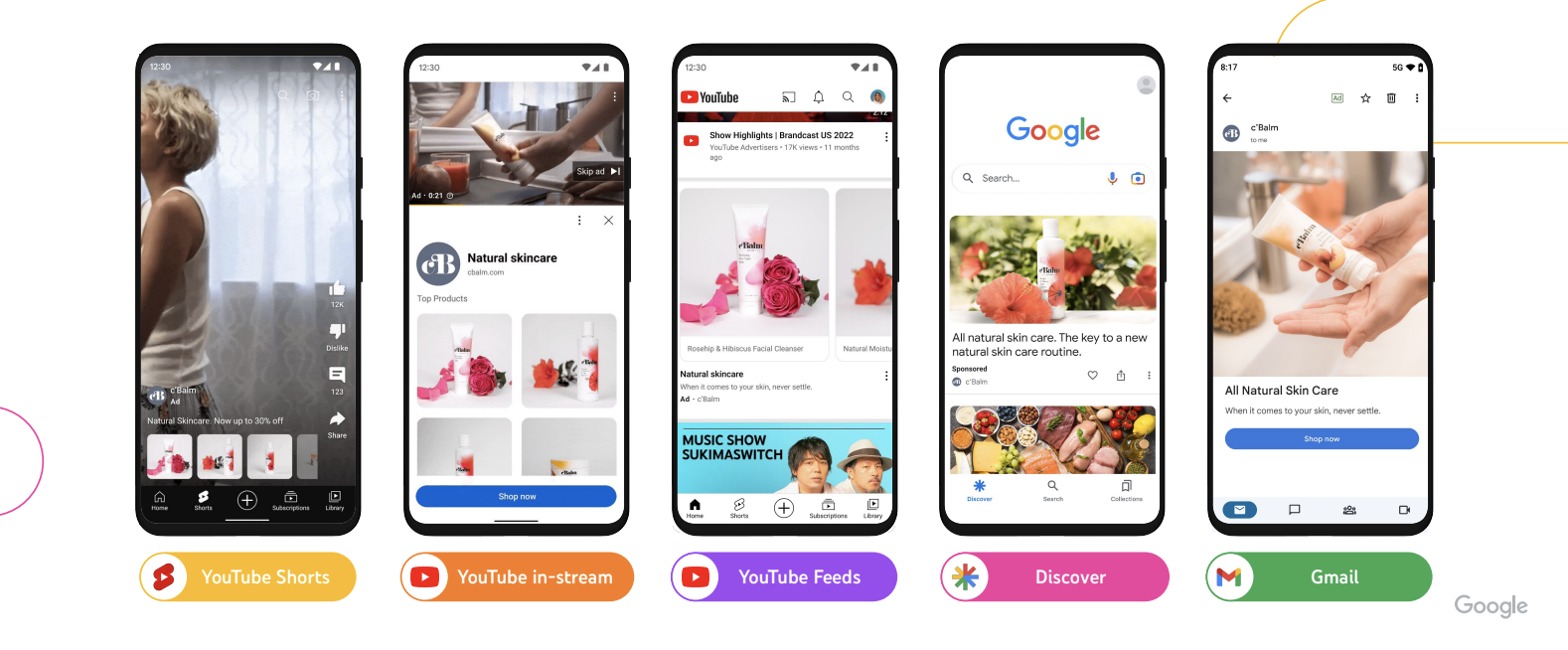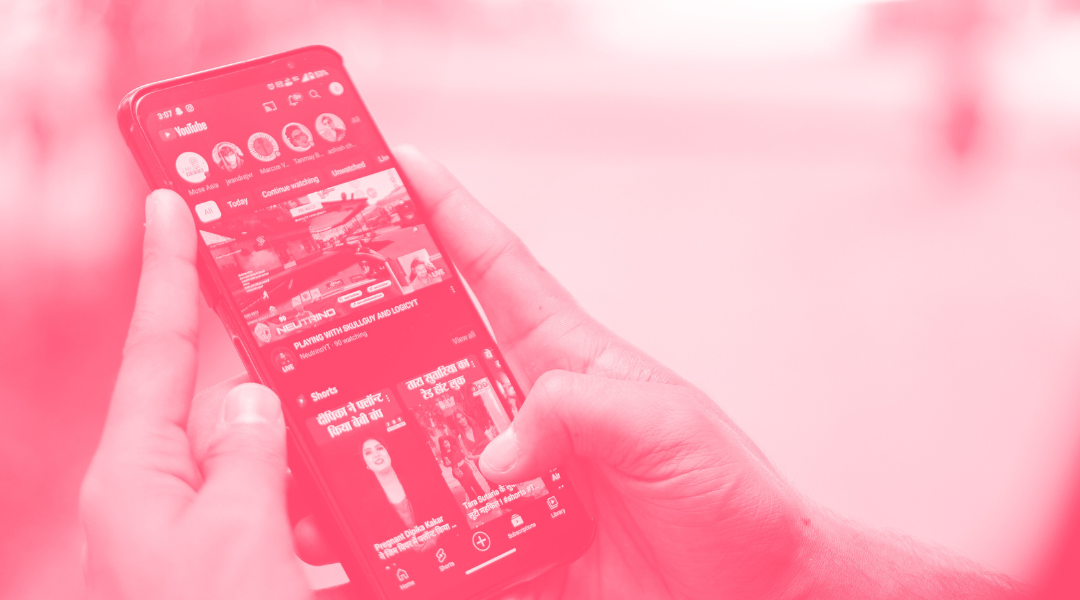Demand Gen on YouTube: when demand generation becomes performance
For years, brands have invested millions in capturing attention… and only that: attention.The real challenge has always been turning that attention...
Plan, activate and control media to hit targets with precision.
Turn data into smart decisions with advanced analytics and modeling.
Efficiency, governance and scale for agencies and teams.

[Ebook] How to plan for an unstoppable peak season
Master high seasons with strategy, data, and automation. Discover how to optimize your campaigns during peak demand periods with strategies based on market analysis and consumer behavior.
Discover more
Imagine reaching your ideal audience before they actively search for your product. Not when they're already decided, but when they're still exploring, getting inspired, or simply browsing their favorite content on YouTube or Discover. That's the magic of Google Demand Gen campaigns: a marketing strategy that plays offense, not defense.
This natural evolution of Discovery campaigns not only enhances visual performance but combines the best of Google's AI with the most powerful channels for demand generation and brand consideration. At Adsmurai, we've successfully integrated them for brands looking to scale awareness without sacrificing performance.
Let's break down what they are, why they benefit you, and how you can make the most of them.
TABLE OF CONTENTS
In 2019, Google made a significant mark in advertising by launching Discovery Ads. This revolutionary approach allowed brands to engage with consumers through a visually appealing, personalized, and immersive experience.
Demand Gen campaigns are designed to spark interest in products or services before the user actively searches for them. Where will you see them in action? On high-impact visual properties such as:
The core of these tools is to facilitate direct connections with consumers and stimulate demand from the mid-funnel stage through to conversion. This concept mirrors the principles of Performance Max campaigns—but with a twist. While Performance Max targets the lower funnel, where users are ready to take action on a website, Demand Gen campaigns focus on the mid-funnel. That means reaching users who are interested but not yet actively searching. By placing ads strategically within organic content, these campaigns leverage push marketing by subtly showing ads as users browse digital content.
These campaigns are powered by machine learning and draw from the same intent insights that Google has perfected in Search and Performance Max campaigns—but applied in a more visual and emotional context.
In short: Demand Gen = Enhanced Discovery + YouTube + AI + Multi-format visual creatives.

1. Massive and Segmented Reach
With access to more than 3 billion monthly active users across properties like YouTube and Discover, Demand Gen allows you to speak to your audience where they're already spending time.
2. Visual Formats That Capture Attention
Personalized ad experiences: Unlike traditional Discovery ads, Demand Gen campaigns integrate both image and video formats into a single campaign. Advertisers can preview their creatives across different surfaces and run A/B creative experiments to optimize impact. Perfect for categories like fashion, lifestyle, travel, or automotive.
3. Intent-Based Targeting
Thanks to Google’s ecosystem, you can combine custom audiences, customer lists, interests, and behaviors with recent browsing signals. Basically, Google knows when someone is almost ready to fall in love with your brand.
Advertisers can experiment with a variety of formats—short-form videos, carousels, portrait, and square images—to maximize engagement.
Demand Gen campaigns also leverage lookalike segments to effectively reach Google audiences, enhancing both reach and relevance.
AI That Does the Dirty Work
Automation takes care of finding the best combinations of bids, placements, and creatives. You just bring a good visual story, and Google handles the rest.
Flexible Bidding Options
Demand Gen campaigns are built on a range of dynamic bidding strategies, revolutionizing the art of campaign optimization. These strategies, powered by Google’s AI, are designed to align with your specific business goals.

Advanced Measurement
Advanced reporting and measurement: New features include brand lift and search lift metrics for YouTube across both image and video ad formats.
Although they sound similar, Demand Gen and Lead Gen play in very different leagues. Here's a quick comparison:
|
Demand Gen |
Lead Gen |
|
|
🎯 Goal |
Generate interest and consideration |
Capture contact data (direct conversion) |
|
⏳ Funnel Stage |
Mid |
Bottom |
|
📍 Placements |
YouTube, Gmail, Discover |
Search, Display, Lead Forms |
|
🎨 Ad Type |
Visual (videos, carousels, images) |
Forms, landing pages |
|
🤖 Audiences |
Intent and behavior-based |
Keywords, retargeting |
The ideal strategy? Combine them. Demand Gen creates the desire; Lead Gen captures it.
Influence on consumer behavior: With the increasing use of video in consumer decision-making, Demand Gen campaigns capitalize on this trend to drive demand and boost conversions.
YouTube’s Impact: YouTube has a broad and highly engaged audience actively searching for quality product information. Its diverse ad formats support various goals—from skippable ads to unskippable bumper ads.
Multiplatform Dynamics: Demand Gen campaigns harness not only the power of YouTube but also integrate channels like Discover and Gmail. Studies show that 63% of consumers discover new products and brands through Google feeds—and 91% of them take action.
To succeed with Google Demand Gen campaigns, it's essential to follow strategic best practices. These will help you fine-tune your campaigns to achieve maximum impact and efficiency across different marketing stages.
Let’s dive into the key recommendations that can elevate your Demand Gen efforts to the next level.
1. Get ready to make a visual impact
Create assets tailored to each channel (short videos for Shorts, carousels for Discover). Ensure brand consistency across visuals. Keep your call-to-action (CTA) prominent in visuals, voiceovers, and graphics. Prioritize creatives that have shown strong performance across placements. Keep ad copy concise, with less than 20% text overlay on images. Run A/B tests to optimize creatives for specific audience segments.

2. Activate Google’s intelligence
Use “Maximize Conversions” or “Maximize Conversion Value” if you have enough data. Let the algorithm work its magic.
Advanced advertisers can start with tCPA or tROAS bids depending on their familiarity and goals. If you're new to Demand Gen or lack specific tCPA targets, launch with Max Conversions and switch to tCPA after hitting 50 conversions. To drive relevant traffic, Max Clicks is effective and doesn’t require conversion tracking. Use Bid Strategy Reports to understand performance.
3. Create and test multiple creatives
Mix formats, messages, and styles. Variety fuels the algorithm.
Ensure campaign stability early on by avoiding major changes during the first two weeks. Once you have at least 50 conversions per ad group, consider restructuring. Adjust tCPA bids within a ±20% range to fine-tune results.
Group audience themes within the same ad group to aid learning and simplify targeting. Use the Asset Report to identify top-performing creatives and ensure your content follows best practices. Adapt your strategy based on whether you’re using a Google Merchant Center feed—consider Dynamic Product Ads or sitelinks as needed.
4. Target with intent
Use custom audiences, customer lists, and remarketing. Segments familiar with your brand tend to perform better.
Enable Optimized Targeting from the start to boost efficiency and scalability. Use both online and offline data to reach current customers and high-intent audiences. Upload Customer Match lists with a good match rate and key identifiers to improve targeting precision. Keep data fresh and include at least one campaign targeting in-market audiences actively searching for your offerings.

5. Budget setup
Set a recommended daily budget of $100–$500 per ad group to achieve meaningful results. Ad groups with 50+ conversions usually perform better. Aim for daily budgets that are at least 15x your tCPA or expected CPA. Use the budget simulator in the UI to explore Max Conversions simulations.
6. Don’t expect instant sales—measure the full impact
Use incrementality tests, view-through conversions, and consideration metrics. Demand Gen is a strategic play, not a tactical one.
One clear example: Trendy Shop, a digital fashion brand, partnered with Adsmurai to launch their new collection through Demand Gen. The goal: boost brand awareness and drive qualified traffic to their website.
Trendy Shop needed to promote a new product collection in record time, targeting new users specifically.
This case proves that a visually engaging, well-targeted, and AI-powered campaign can generate real demand with tangible returns, even in competitive industries.
If you don’t generate demand, someone else will
User attention is a finite resource. If you don’t inspire them, another brand will. Demand Gen campaigns are the perfect tool to claim that emotional space before intent even forms.
At Adsmurai, we combine the power of Demand Gen with dynamic creativity, product feeds, AI, and proprietary audiences to help you build campaigns that don’t just look good, but actually perform.
Ready to put your brand in discovery mode?

For years, brands have invested millions in capturing attention… and only that: attention.The real challenge has always been turning that attention...

For years, demand generation was a numbers game: spend more to get more leads and hope that a few would actually buy.Lead Ads from platforms like ...

Google has done it again! If you thought Performance Max was the peak of automation, buckle up: here comes AI Max Search, a new evolution in...